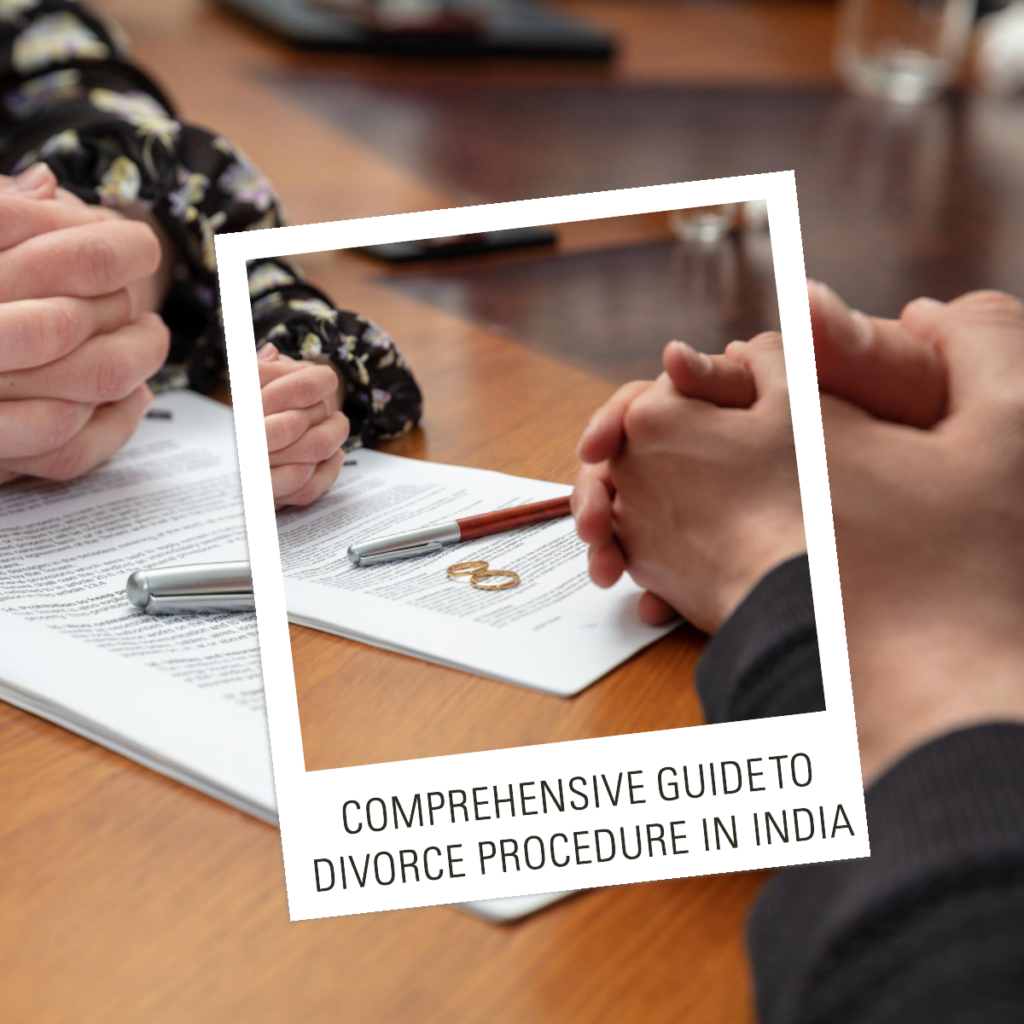Divorce Procedure in India, with procedures varying based on religion and personal laws. Broadly, there are two main categories of divorce: Mutual Divorce and Contesting Divorce. In this comprehensive guide, we’ll walk you through every step of the divorce process, ensuring you have the necessary information to make informed decisions.

Step One In Divorce Procedure in India : Filing a Divorce Petition
To start the divorce proceedings, the husband or wife must file petition before the family court for a judgment of divorce. Lawyers usually draw up these documents for their clients. In person a party can directly prepare and file petition in the court, without appointing lawyer.
To appoint a lawyer to represent him in the court, petitioner and respondent have to take prior permission from court under section 13 of Hindu Marriage Act. Normally lawyers will do all these paper work/formalities.
Divorce Procedure in India in Contesting Divorce
In the context of a contested divorce, the foundation for the petition lies in the particular grounds outlined within Section 13 of the Hindu Marriage Act, 1955. It is imperative for the petitioner to explicitly specify the relevant section when filing.
Step Two In Divorce Procedure in India : Court Issues Summons and Seeks Reply
Upon filing the divorce petition, the court issues summons to the other spouse, seeking their response.
If Wife is the petitioner the initial petition often demands much more than the Petitioner expects. The respondent, who didn’t initiate the divorce, has a limited timeframe to file an objection or reply. This response usually involves admitting or denying each assertion and requesting the court to deny the petitioner’s request.
Step Three In Divorce Procedure in India: Objection and Interim Applications
Alongside the reply, the respondent often files a Cross-Petition or Counter-Claim to present their stance on the facts and the relief they seek. Filing a Cross-Petition is advisable as it ensures the respondent doesn’t find themselves at trial solely addressing the petitioner’s demands.
Step Four: Temporary Motions and Reconciliation
At an early stage, parties may file motions for temporary orders to address urgent issues that can’t wait until the divorce’s conclusion. Most parties attempt to reach a temporary arrangement without court involvement to minimize legal fees and present a favorable impression to the judge. Respondents may file objections to Interim Applications to avoid hefty monthly allowances and litigation charges.
Step Five: Hearing on Interim Applications
After receiving objections, the court holds a hearing, collects information from both spouses, and rules on the requests. Judges typically act swiftly in granting temporary orders, which remain in force until the court decides otherwise or finalizes the divorce.
Step Six: Going to Trial
In contested divorces, both parties present their evidence and arguments before the court. This includes witness testimonies, financial disclosures, and other relevant information.
Step Seven:
Following the submission of evidence, the subsequent step in the process involves presenting final arguments.
Step Eight: Decree of Divorce
If the court is satisfied with the grounds for divorce and the evidence presented. It may grant a decree of divorce, thus formally concluding the marriage.
Step Ninth: Appeals
Furthermore, either party retains the right to appeal the court’s decision in a higher court if they are in disagreement with the judgment. Moreover, the period of limitation for filing an appeal is 90 days from the date of the decree of a family court.
PLEASE NOTE:
It’s essential to recognize that divorce laws can differ among various religions in India. Such as Hindu, Muslim, Christian, and other. Each with its own specific procedures and grounds for divorce. Moreover, divorce laws and procedures may change over time. So it’s advisable to consult with a qualified lawyer for the most up-to-date information and guidance on divorce in India. Stay tuned for a separate post on Mutual Divorce.
If you require any legal assistance or guidance on divorce proceedings, do not hesitate to contact Patil Legal Solutions, your reliable legal partner.



Leave a Reply